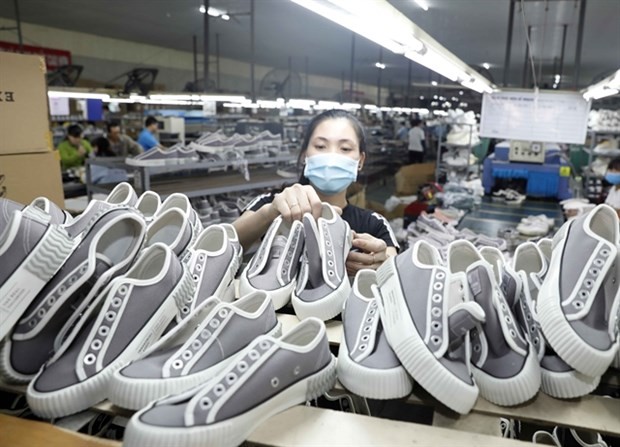
Vietnamese firms urged to foster raw material imports from UK: Experts
Latest
 |
| Shoes are made at a factory in Hanoi. Footwear raw materials are among items that accounted for a large proportion of Vietnam's import turnover from the UK in the first half of this year. (Photo: VNA) |
According to experts, the UK can be a source of quality raw materials for Vietnam especially because raw materials that Vietnam needs to import for export production or domestic consumption are items that Vietnam offers preferential tariffs to the UK.
Under the trade deal, Vietnam commits to eliminate 48.5% of tariff lines from January 1, 2021; 91.8% of tariff lines from January 1, 2027 and 98.3% of tariff lines from January 1, 2029.
The remaining 1.7% of tariff lines are partially liberalised through tariff rate quotas (the quota volumes are consistent with Vietnam’s WTO commitments and duties within quotas will be removed by 2031) or not entitled to preferential treatment.
Typically, 61% of tariff lines for machinery and appliances imported from the UK have been removed since January 1, 2021, while import tariffs for all other products will be eliminated after nine years.
For pharmaceutical products, Vietnam has eliminated 71% of tariff lines from January 1, 2021. All other products will have import taxes eliminated after four to six years.
Meanwhile, Vietnam has lifted 80% of tariff lines imposed on raw materials for textiles, garments and footwear from January 1, 2021, while that of all other products will be eliminated after four to six years.
Statistics from the General Department of Customs revealed that Vietnam imported nearly 373 million USD worth of goods from the UK, equivalent to the same period in 2022.
Among staples recording high growth rate included seafood raw materials (233%); iron and steel products (95%); fabrics (72%); plastic products (15%) and machinery, equipment, tools and spare parts (6.4%).
According to the department, items that accounted for a large proportion of Vietnam's import turnover from the UK in H1 included machinery, equipment, tools, and spare parts (24%); pharmaceuticals (11.8%); chemicals (6.4%); textile, garment, leather, and shoe raw materials (5.2%); seafood and seafood materials 4.6%.
These above-mentioned goods are what Vietnam needs to import for export production and domestic consumption.
A recent survey by Vietnam Report, a market research company in Vietnam, showed that a top priority among Vietnamese businesses is to diversify their supply sources, especially for imported raw materials.
According to the report, 72.7% of all participants said they want to seek out new suppliers at lower prices and they want to do so in the near future.




















